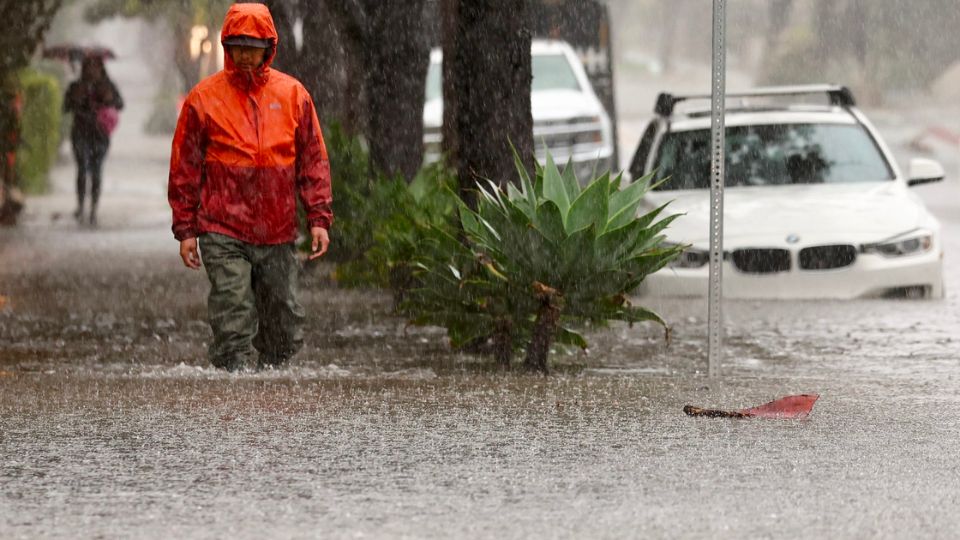Meteorologists in California reported that Los Angeles has already accumulated a full year’s worth of rain within just five months of the water year, spanning from October to September.
The heavy rainfall is due to a series of atmospheric rivers that have hit the state this month. Last year, over a dozen storms contributed to easing the state’s severe drought and refilling many reservoirs, but they also led to destructive floods and landslides.
Atmospheric rivers are described as long, narrow regions in the atmosphere that act like rivers in the sky, carrying most of the water vapor outside of the tropics, as stated by the National Oceanic and Atmospheric Administration.
Yet another storm full of moisture reached California on Sunday, drenching the northern half of the state before moving south on Monday. Los Angeles has received an extra 1.99 inches of rain since the storm hit, as per a report from the National Weather Service (NWS). This brings the city’s February rainfall total to 12.96 inches, marking it as the fourth wettest February in Downtown Los Angeles since records began in 1877.
The NWS report stated that the current February rainfall of 12.56 inches in Downtown Los Angeles is 88 percent of the average seasonal rainfall of 14.25 inches from 1991 to 2020. The total rainfall for the 2023-2024 water year is currently 17.79 inches, exceeding the normal amount for this time of year by 8 inches and surpassing the normal annual total by over 3.5 inches.
Also Read: Revealing the 5 Most Stunningly Scenic Drives in Entire Oregon
According to the report, Los Angeles will have received 125 percent of its normal seasonal rainfall even if no more rain falls through September. Los Angeles received over 7 inches of rain from an atmospheric river that struck California, leading to severe flooding.
The latest storm has left the Los Angeles area, and NWS meteorologist Mike Wofford mentioned to Newsweek that there is no more rain expected from this storm, but there is a small chance of rain on Monday.
Wofford suggested that the El Niño climate pattern might be the reason for the increased rainfall in Los Angeles. “Before winter, it was expected that we would receive more rain because of the El Niño conditions in the Pacific,” Wofford stated. “This usually results in storms moving further south and bringing in additional moisture.”



Leave a Reply